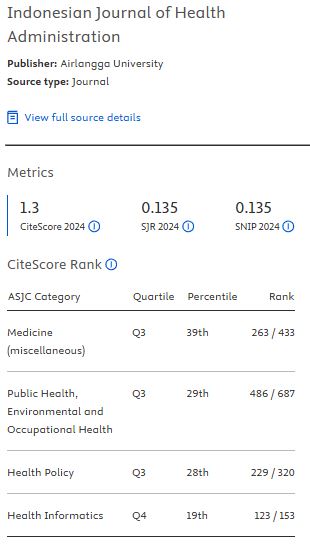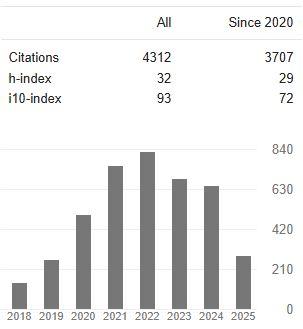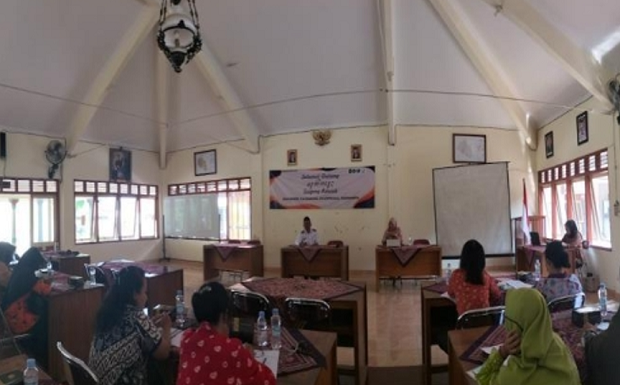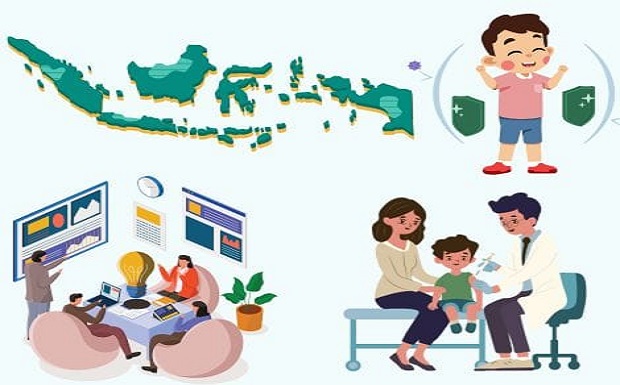THE PERFORMANCE DIFFERENCES BETWEEN HIGH AND LOW SALES TURNOVER COMMUNITY PHARMACIES
Downloads
Background: Pharmacy managers will make various efforts to increase their income. In spite of this, pharmacies that have the same facilities can generate greatly varied incomes.
Aims: The purpose of this study was to determine the difference between high sales turnover pharmacies and low sales turnover pharmacies as observed through employee motivation, organizational culture, and patient satisfaction.
Methods: This study used an analytical design with a questionnaire and checklist. Consumers were selected using the purposive sampling system to assess patient satisfaction. All employees were sampled to assess work motivation and organizational culture. Data analysis was performed using descriptive, bivariate, and multivariate testing.
Results: Direct observation of pharmaceutical services from the two outlets shows that there were differences in the time it takes for pharmacist to retrieve the drug, the time for providing drug information, collecting information from patients, and the type of drug information provided, as well as employee motivation, organizational culture, and patient satisfaction.
Conclusion: Services at pharmacies with high sales turnover are different from pharmacies with low sales turnover. Empathy has the greatest effect on sales turnover, followed by reliability, responsiveness, assurance, and tangible dimensions. Outlets that have high sales turnover have better organizational culture and higher employee motivation when compared to outlets that have low sales turnover.
Keywords: motivation, organizational culture, patient satisfaction, sales turnover
Alhusein, N. and Watson, M. C. (2019) ‘Quality indicators and community pharmacy services: a scoping review', International Journal of Pharmacy Practice, 27(6), pp. 490–500. doi: 10.1111/ijpp.12561.
Allinson, M. and Chaar, B. (2016) ‘How to build and maintain trust with patients', The Pharmaceutical Journal, 297(7895), pp. 300–303.
Amrullah, H., Satibi, S. and Fudholi, A. (2020) ‘Pengaruh Pelatihan Pelayanan Kefarmasian terhadap Pengetahuan Pengelola Obat di Puskesmas Kabupaten Ogan Komering Ilir', Jurnal Manajemen dan Pelayanan Farmasi (Journal of Management and Pharmacy Practice), 10(1), pp. 45–55. doi: 10.22146/jmpf.50601.
Antari, N. P. U., Meriyani, H. and Suena, N. M. D. S. (2019) ‘Faktor-Faktor Komunikasi yang Mempengaruhi Tingkat Kepercayaan terhadap Tenaga Teknis Kefarmasian', Jurnal Ilmiah Medicamento, 5(2), pp. 63–69. doi: 10.36733/medicamento.v5i2.431.
Antari, N. P. U., Purnomo, A. and Sumarni, S. (2011) ‘Difference in Outpatient's Expectation and Perception toward Pharmacy Service of RSUP Dr. Sardjito Yogyakarta and Rumah Sakit Bethesda Yogyakarta', Jurnal Manajemen dan Pelayanan Farmasi, 1(2), pp. 84–88. doi: 10.22146/jmpf.35.
Anwarudin, W., Fudholi, A. and Satibi (2013) ‘Evaluasi Kinerja Unit Bisnis Apotek Perusahaan Daerah Farmasi Ciremai Kota Cirebon Dengan Balanced Scorecard Sebagai Bahan Penyusunan Strategy Maps', Jurnal Manajemen dan Pelayanan Farmasi, 3(4), pp. 291–310. doi: 10.22146/jmpf.224.
Asy'ari, R. and Nurnida, I. (2018) ‘Innovatife, Customer First, Accountable, Responsible', Jurnal manajemen dan bisnis, 2(3), pp. 108–114.
Basuki, K. and Maesaroh, M. (2017) ‘Motivasi Sebagai Pemediasi Pengaruh Komitmen Dan Lingkungan Kerja Pada Kepuasan Kerja', Business Management Journal, 13(1), pp. 1–15. doi: 10.30813/bmj.v13i1.254.
Dharmmesta, B. S. and Irawan (2005) Manajemen Pemasaran Modern. Yogyakarta: Liberty.
Dieleman, M., Gerretsen, B. and van der Wilt, G. J. (2009) ‘Human resource management interventions to improve health workers' performance in low and middle income countries: A realist review', Health Research Policy and Systems, 7(7), pp. 1–13. doi: 10.1186/1478-4505-7-7.
Emmerton, L. and Shaw, J. (2002) ‘The influence of pharmacy staff in non-prescription medicine sales', International Journal of Pharmacy Practice, 10(2), pp. 101–106. doi: 10.1111/j.2042-7174.2002.tb00594.x.
Franco, L. M. et al. (2004) ‘Determinants and consequences of health worker motivation in hospitals in Jordan and Georgia', Social Science and Medicine, 58(2), pp. 343–355. doi: 10.1016/S0277-9536(03)00203-X.
Gardjito, A. (2014) ‘Pengaruh Motivasi Kerja dan Lingkungan Kerja terhadap Kinerja Karyawan (Studi pada Karyawan Bagian Produksi PT. Karmand Mitra Andalan Surabaya)', Jurnal Administrasi Bisnis S1 Universitas Brawijaya.
Gunawan, R., Putra, I. and Purbandika, I. (2011) Tingkat Kehadiran Apoteker serta Pembelian Obat Keras tanpa Resep di Apotek. Denpasar: Denpasar.
Hagemeier, N. E., Ventricelli, D. and Sevak, R. J. (2017) ‘Situational communication self-confidence among community pharmacists: A descriptive analysis', Research in Social and Administrative Pharmacy, 13(6), pp. 1175–1180. doi: 10.1016/j.sapharm.2016.12.003.
Jatiningrum, C. D., Musadieq, M. Al and Prasetya, A. (2016) ‘Pengaruh Budaya Organisasi, Motivasi dan Kemampuan terhadap Kinerja', Jurnal Administrasi Bisnis, 39(1), pp. 117–124.
Jawaid, S. A. (2016) ‘Quality of pharmacy services and regulatory compliance', Pakistan Journal of Medical Sciences, 32(5), pp. 1063–1065. doi: 10.12669/pjms.325.11416.
Jaya, M. K. A. and Apsari, D. P. (2018) ‘Gambaran Waktu Tunggu dan Identifikasi Faktor yang Mempengaruhi Lama Waktu Tunggu Pelayanan Obat atas Resep Dokter di Puskesmas Kota Denpasar', Jurnal Ilmiah Medicamento, 4(2), pp. 94–99. doi: 10.36733/medicamento.v4i2.861.
Jose, J., Al Shukili, M. N. and Jimmy, B. (2015) ‘Public's perception and satisfaction on the roles and services provided by pharmacists - Cross sectional survey in Sultanate of Oman', Saudi Pharmaceutical Journal, 23(6), pp. 635–641. doi: 10.1016/j.jsps.2015.02.003.
Kementerian Kesehatan R.I (2016) Peraturan Menteri Kesehatan RI No 73 Tahun 2016 Tentang Standar Pelayanan Kefarmasian di Apotek, Kementerian Kesehatan Republik Indonesia.
Kosasih (2019) ‘Analisis Tentang Pengaruh Budaya Kerja, Komitmen Organisasi, Dan Standar Prosedur Operasional Terhadap Produktivitas Kerja Karyawan (Studi Kasus di PT Kimia Farma Apotek Tbk (Persero) Wilayah Bandung Timur)', JRB-Jurnal Riset Bisnis. doi: 10.35592/jrb.v1i2.245.
Kotler, P. and Keller, L. K. (2006) Marketing Management. 12th edn. New Jersey: Pearson Prentice Hall.
Lemeshow, et al. (1997) Besar Sampel dalam Penelitian. Yogyakarta: Gadjah Mada University Press.
Monica, E., Dharmmesta, B. S. and Syahlani, S. P. (2017) ‘Correlation Analysis Between the Service Quality, Customer Satisfaction, and Customer Loyalty of Viva Generik Pharmacy In Semarang', Journal of Pharmaceutical Sciences and Community. doi: 10.24071/jpsc.142569.
Naik Panvelkar, P., Saini, B. and Armour, C. (2009) ‘Measurement of patient satisfaction with community pharmacy services: a review', Pharmacy World & Science, 31(5), pp. 525–537. doi: 10.1007/s11096-009-9311-2.
Naughton, C. (2018) ‘Patient-Centered Communication', Pharmacy, 6(1), p. 18. doi: 10.3390/pharmacy6010018.
Nitadpakorn, S., Farris, K. B. and Kittisopee, T. (2017) ‘Factors affecting pharmacy engagement and pharmacy customer devotion in community pharmacy: A structural equation modeling approach', Pharmacy Practice, 15(3), pp. 1–8. doi: 10.18549/PharmPract.2017.03.999.
Novianita, M., Sutarsa, I. N. and Adiputra, N. (2016) ‘Factors Associated with the Quality of Pharmacy Service Provision in Denpasar, Bali', Public Health and Preventive Medicine Archive. doi: 10.24843/phpma.2016.v04.i01.p07.
Parasuraman, A, Zeithaml, V. A and Berry, L. L. (1988) ‘SERQUAL: A Multiple-Item scale for Measuring Consumer Perceptions of Service Quality', Journal of Retailing. doi: 10.1016/S0148-2963(99)00084-3.
Rizal, R., Romidon, H. and Handika, I. (2017) ‘Analisis Bauran Pemasaran terhadap Omzet Penjualan pada PT. Gaudi Dwi Laras Cabang Palembang', Jurnal Adminika, 3(2), pp. 78–94.
Rosenthal, M., Austin, Z. and Tsuyuki, R. T. (2010) ‘Are pharmacists the ultimate barrier to pharmacy practice change?', Canadian Pharmacists Journal, 143(1), pp. 37–42. doi: 10.3821/1913-701X-143.1.37.
Rowe, A. K. et al. (2005) ‘How can we achieve and maintain high-quality performance of health workers in low-resource settings?', Lancet, 366(9490), pp. 1026–1035. doi: 10.1016/S0140-6736(05)67028-6.
S., K., R., S. W. A. and J., S. G. A. (2018) ‘Patients' Satisfaction towards the Service Quality of pharmacy in the Government Hospitals in Sri Lanka', Management Issues, 3(I). Available at: https://www.ou.ac.lk/home/images/Faculty_and_institute/MS/FMS_E_News/Management Issues volume 3 2018.pdf.
Satibi, S., Furdiyanti, H. N. and Rahmawati, M. (2007) ‘Performance evaluation of pharmacy x in Yogyakarta using balanced scorecard approach', Indonesian Journal of Pharmacy, 18(2), pp. 71–80. doi: 10.14499/indonesianjpharm0iss0pp71-80.
Sato, N. et al. (2020) ‘Exploring the factors influencing the quality of "Health Support Pharmacy” services in Japan: Perspectives of community pharmacists', Research in Social and Administrative Pharmacy, (February), pp. 1–8. doi: 10.1016/j.sapharm.2020.02.012.
Sekaran, U. and Bougie, R. (2016) Research Methods For Business: A Skill Building Approach. Seventh Ed. Chichester, West Sussex: John Wiley & Sons.
Shao, S. C. et al. (2020) ‘Workload of pharmacists and the performance of pharmacy services', PLoS ONE, 15(4), pp. 1–12. doi: 10.1371/journal.pone.0231482.
Uneputty, J. P., Masruchin and Djoharsyah (2017) ‘Pengaruh Kondisi Kerja dan Budaya Kerja terhadap Kinerja Karyawan dengan Motivasi Kerja sebagai Variabel Intervening', Pharmacon.
Unhurian, L. et al. (2018) ‘Implementation of Standards of Good pharmacy practice in the World: A Review', Asian Journal of Pharmaceutics, 12(1), pp. 42–46.
Watson, M. C. and Skea, Z. C. (2018) ‘Jugglers and tightrope walkers: The challenge of delivering quality community pharmacy services', PLoS ONE, 13(7), pp. 1–15. doi: 10.1371/journal.pone.0200610.
Widiati, E. (2012) ‘Pengaruh Motivasi Kerja, Disiplin Kerja Dan Budaya Organisasi terhadap Kinerja Pegawai Kesehatan Pada Rumah Sakit Panti Secanti Gisting', Jurnal Magister Manajemen, 1(1), pp. 109–143.
Willis-Shattuck, M. et al. (2008) ‘Motivation and retention of health workers in developing countries: A systematic review', BMC Health Services Research, 8, pp. 1–8. doi: 10.1186/1472-6963-8-247.
Young, A., Tordoff, J. and Smith, A. (2017) ‘"What do patients want?” Tailoring medicines information to meet patients' needs', Research in Social and Administrative Pharmacy, 13(6), pp. 1186–1190. doi: 10.1016/j.sapharm.2016.10.006.
Yulia, P. R., Baga, L. M. and Djohar, S. (2016) ‘Kepuasan Konsumen terhadap Pelayanan Apotek dan Tingkat Pengetahuan Konsumen Mengenai Standar Pelayanan Kefarmasian yang Berlaku (Studi Kasus di Kota Depok)', Jurnal Aplikasi Bisnis dan Manajemen, 2(3), pp. 312–322. doi: 10.17358/JABM.2.3.312.
Zaini, M., Satibi and Lazuardi, L. (2014) ‘Analysis of Consumer Intention in Utilization of Pharmacy Service', Jurnal Manajemen dan Pelayanan Farmasi, 4, pp. 17–24.
Copyright (c) 2021 Ni Putu Udayana Antari, Ni Putu Dewi Agustini, Ni Made Dharma Shantini Suena

This work is licensed under a Creative Commons Attribution-ShareAlike 4.0 International License.
1. As an author you (or your employer or institution) may do the following:
- make copies (print or electronic) of the article for your own personal use, including for your own classroom teaching use;
- make copies and distribute such copies (including through e-mail) of the article to research colleagues, for the personal use by such colleagues (but not commercially or systematically, e.g. via an e-mail list or list server);
- present the article at a meeting or conference and to distribute copies of the article to the delegates attending such meeting;
- for your employer, if the article is a ‘work for hire', made within the scope of your employment, your employer may use all or part of the information in the article for other intra-company use (e.g. training);
- retain patent and trademark rights and rights to any process, procedure, or article of manufacture described in the article;
- include the article in full or in part in a thesis or dissertation (provided that this is not to be published commercially);
- use the article or any part thereof in a printed compilation of your works, such as collected writings or lecture notes (subsequent to publication of the article in the journal); and prepare other derivative works, to extend the article into book-length form, or to otherwise re-use portions or excerpts in other works, with full acknowledgement of its original publication in the journal;
- may reproduce or authorize others to reproduce the article, material extracted from the article, or derivative works for the author's personal use or for company use, provided that the source and the copyright notice are indicated.
All copies, print or electronic, or other use of the paper or article must include the appropriate bibliographic citation for the article's publication in the journal.
2. Requests from third parties
Although authors are permitted to re-use all or portions of the article in other works, this does not include granting third-party requests for reprinting, republishing, or other types of re-use.
3. Author Online Use
- Personal Servers. Authors and/or their employers shall have the right to post the accepted version of articles pre-print version of the article, or revised personal version of the final text of the article (to reflect changes made in the peer review and editing process) on their own personal servers or the servers of their institutions or employers without permission from JAKI;
- Classroom or Internal Training Use. An author is expressly permitted to post any portion of the accepted version of his/her own articles on the author's personal web site or the servers of the author's institution or company in connection with the author's teaching, training, or work responsibilities, provided that the appropriate copyright, credit, and reuse notices appear prominently with the posted material. Examples of permitted uses are lecture materials, course packs, e-reserves, conference presentations, or in-house training courses;























